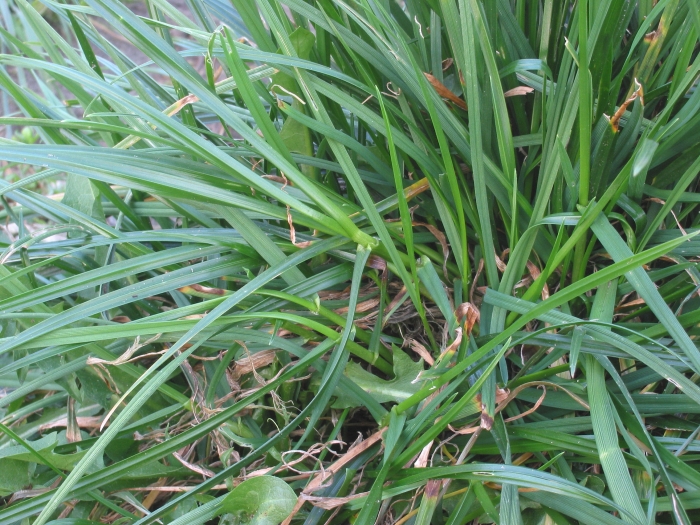Perennial Ryegrass
(Lolium perenne)
Perennial Ryegrass (Lolium perenne)
/
/

Rasbak
CC BY-SA 3.0
Image By:
Rasbak
Recorded By:
Copyright:
CC BY-SA 3.0
Copyright Notice:
Photo by: Rasbak | License Type: CC BY-SA 3.0 | License URL: http://creativecommons.org/licenses/by-sa/3.0/ | Uploader: Rasbak | Publisher: Wikimedia Commons | Title: Engels_raaigras_spruiten_(Lolium_perenne_tillers).jpg | Notes: User created page with UploadWizard |
































































Estimated Native Range
Summary
Lolium perenne, commonly known as Perennial Ryegrass, is a cool-season grass that can behave as an evergreen perennial or annual, depending on the climate. It is native to temperate regions including Europe, the Middle East, North Africa, the western Himalayas, and West Asia, where it thrives in meadows, pastures, and lawns, often near water bodies. This grass typically forms a low, dense turf and can reach heights of 1 to 2 feet (30 to 60 cm). The leaves are dark green, glossy on the underside, with smooth edges and distinct parallel veins on the upper surface. Perennial Ryegrass is notable for its rapid establishment and tolerance to heavy foot traffic, making it a popular choice for sports fields, lawns, and erosion control. It flowers from May to November, with the inflorescence being a spike that is not particularly showy.
Perennial Ryegrass is valued for its ability to create a lush, green lawn quickly and is often used to overseed dormant warm-season grasses in the southwestern United States during winter. It requires full sun to partial shade and prefers moist, well-drained soils, although it can tolerate a range of soil conditions. This grass has a fibrous root system that helps to stabilize soil. It is important to note that Perennial Ryegrass can become invasive outside its native range, so gardeners should check local regulations before planting.CC BY-SA 4.0
Perennial Ryegrass is valued for its ability to create a lush, green lawn quickly and is often used to overseed dormant warm-season grasses in the southwestern United States during winter. It requires full sun to partial shade and prefers moist, well-drained soils, although it can tolerate a range of soil conditions. This grass has a fibrous root system that helps to stabilize soil. It is important to note that Perennial Ryegrass can become invasive outside its native range, so gardeners should check local regulations before planting.CC BY-SA 4.0
Plant Description
- Plant Type: Grass
- Height: 1-2 feet
- Width: 0.15-0.3 feet
- Growth Rate: Rapid
- Flower Color: N/A
- Flowering Season: Spring
- Leaf Retention: Evergreen
Growth Requirements
- Sun: Full Sun, Part Shade
- Water: Medium
- Drainage: Medium, Slow
Common Uses
Erosion Control, Groundcover
Natural Habitat
Native to temperate meadows, pastures, and lawns, often near water bodies
Other Names
Common Names: Winter Ryegrass, Ray Grass, English Ryegrass, Common Darnel, Ray-Grass, Perennial Rye-Grass, Meerjarige Raaigras, Gazun, Almindelig Rajgræs, Englisches Raigras
Scientific Names: , Lolium perenne, Festuca perennis, Lolium pratense, Lolium perenne var. cristatum, Lolium perenne subsp. perenne, Lolium cristatum, Lolium perenne var. perenne, Lolium multiflorum var. ramosum, Lolium tenue
GBIF Accepted Name: Lolium perenne L.